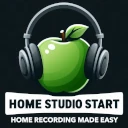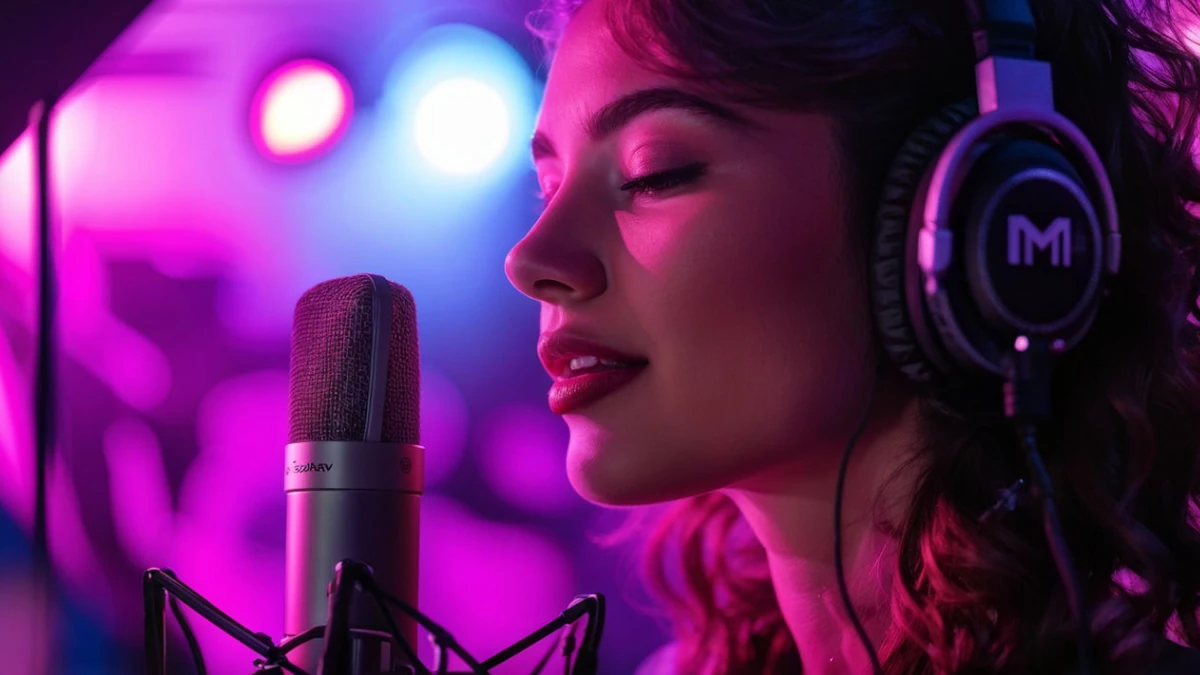Hey there, aspiring music makers and home studio enthusiasts! 🎶 Are you ready to dive into the exciting world of home recording but worried about breaking the bank? Don’t fret! We’ve got you covered with an ultimate guide to budget microphones that deliver professional-quality sound without emptying your wallet. Whether you’re a budding podcaster, a passionate musician, or someone who just loves to create, this guide will help you find the perfect microphone for your home studio setup.
Join us as we explore different types of microphones, highlight top budget-friendly options, and share essential tips to enhance your recording experience. Let’s get started and make your home studio dreams come true! 🎤✨
1. Understanding Microphone Types
Choosing the right microphone for your home studio starts with understanding the different types available. Each type has unique characteristics that make it suitable for specific recording needs. Let’s explore the three main types of microphones:
Dynamic Microphones
Dynamic microphones are known for their durability and versatility. They work by using a diaphragm attached to a coil of wire, which moves within a magnetic field to generate an electrical signal. These microphones are ideal for live performances and recording loud sound sources like drums and guitar amplifiers. Their robust construction allows them to handle high sound pressure levels without distortion. Popular dynamic microphones include the Shure SM57 and SM58.
Condenser Microphones
Condenser microphones are prized for their sensitivity and accuracy. They operate using a diaphragm placed very close to a backplate, creating a capacitor that varies its capacitance with sound waves. This design makes them perfect for capturing detailed and nuanced sounds, which is why they are commonly used in studio settings for vocals and acoustic instruments. They require a power source, usually provided by phantom power from an audio interface or mixer. Examples of budget-friendly condenser microphones are the Audio-Technica AT2020 and the MXL 990.
USB Microphones
USB microphones offer a plug-and-play solution, making them incredibly convenient for home studio setups, especially for beginners. These microphones have built-in audio interfaces, allowing them to connect directly to a computer via a USB port. This eliminates the need for additional equipment like audio interfaces or mixers. USB microphones are great for digital recordings, podcasts, and streaming. The Blue Yeti and Rode NT-USB Mini are popular choices in this category.
Understanding the differences between dynamic, condenser, and USB microphones is essential for making an informed decision. Each type has its strengths and ideal use cases, so consider your specific recording needs and environment when selecting a microphone for your home studio. For a detailed guide on USB microphones, check out our article on USB microphones for home studios.
2. Top Budget-Friendly Dynamic Microphones
Dynamic microphones are a staple in both live performances and studio settings due to their robustness and versatility. Here, we’ll highlight some of the best budget-friendly dynamic microphones that deliver excellent performance without breaking the bank.
Shure SM57
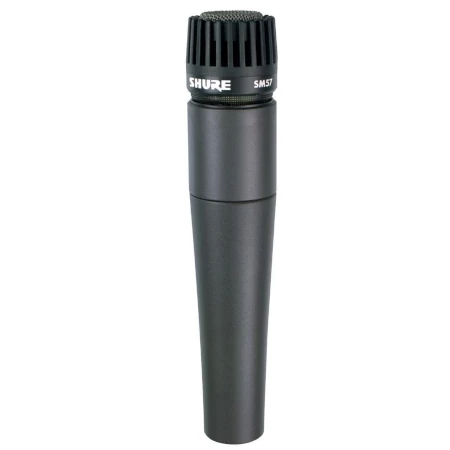
✅ Check Price on Amazon
As an Amazon Associate I earn from qualifying purchases.
The Shure SM57 is a legendary microphone known for its durability and versatility. It’s a go-to choice for recording instruments, especially drums and guitar amplifiers. The SM57 excels in handling high sound pressure levels, making it perfect for capturing the nuances of loud sound sources. Its cardioid pickup pattern helps isolate the main sound source while minimizing background noise, ensuring a clean and focused recording.
Behringer XM8500
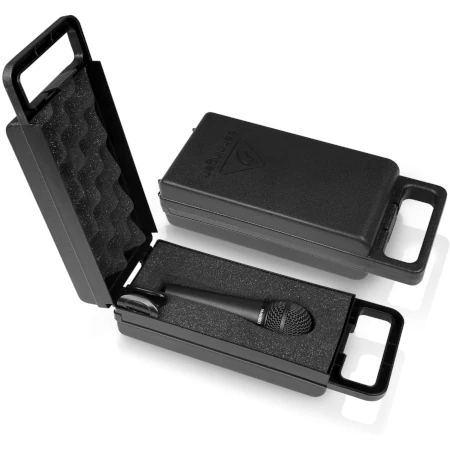
✅ Check Price on Amazon
As an Amazon Associate I earn from qualifying purchases.
The Behringer XM8500 is an excellent choice for those on a tight budget. Despite its low price, it offers a solid build and reliable performance. This microphone is ideal for live vocals and speech, thanks to its cardioid pickup pattern that reduces feedback and background noise. The XM8500 features a two-stage pop filter to minimize plosives, making it a great option for podcasting and voiceovers as well.
Audio-Technica ATR2100x-USB
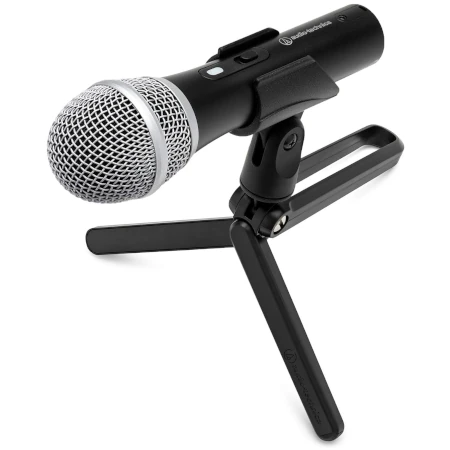
✅ Check Price on Amazon
As an Amazon Associate I earn from qualifying purchases.
The Audio-Technica ATR2100x-USB is a versatile microphone that combines the reliability of a dynamic microphone with the convenience of USB connectivity. It features both XLR and USB outputs, allowing it to be used in various recording setups. This dual functionality makes it perfect for home studios, live performances, and mobile recording. The ATR2100x-USB offers a smooth, extended frequency response, making it suitable for capturing vocals and instruments with clarity. For more tips on recording vocals, check out our guide to recording vocals in your home studio.
Dynamic microphones are a cost-effective solution for home studios, providing durability and versatility for various recording needs. The Shure SM57, Behringer XM8500, and Audio-Technica ATR2100x-USB are top picks that offer excellent performance at budget-friendly prices. Whether you’re recording instruments, vocals, or podcasts, these microphones will help you achieve professional-quality results without stretching your budget.
3. Best Budget Condenser Microphones
Condenser microphones are essential for capturing detailed and accurate sound in a studio setting. They are highly sensitive and provide a wide frequency response, making them ideal for recording vocals and acoustic instruments. Here are some of the best budget-friendly condenser microphones that deliver excellent performance without a hefty price tag.
Audio-Technica AT2020
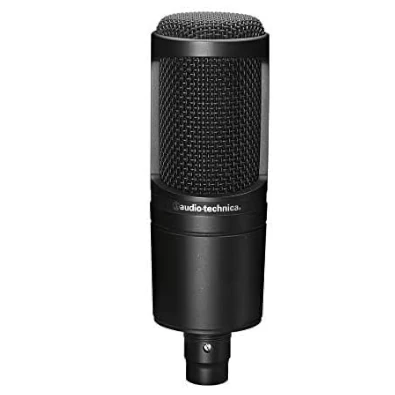
✅ Check Price on Amazon
As an Amazon Associate I earn from qualifying purchases.
The Audio-Technica AT2020 is a highly regarded condenser microphone that offers exceptional value for its price. It features a cardioid polar pattern, which helps to isolate the sound source and reduce background noise. The AT2020 is known for its wide frequency response and high SPL handling, making it versatile enough to handle both vocals and instruments. Its robust build and consistent performance make it a popular choice for home studios. To learn more about setting up a budget-friendly home studio, check out our article on building a cheap home studio.
MXL 990
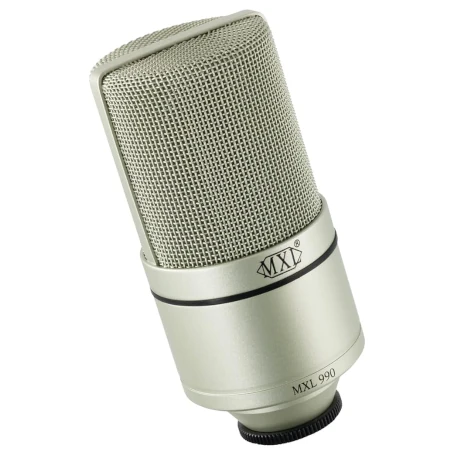
✅ Check Price on Amazon
As an Amazon Associate I earn from qualifying purchases.
The MXL 990 is another excellent budget condenser microphone that offers a warm, rich sound. It features a cardioid pickup pattern and a high-quality FET preamp, which ensures low noise and high output. The MXL 990 is particularly well-suited for recording vocals and acoustic guitars, providing a clear and detailed sound. Its vintage look and solid construction add to its appeal, making it a great addition to any home studio.
Samson C01
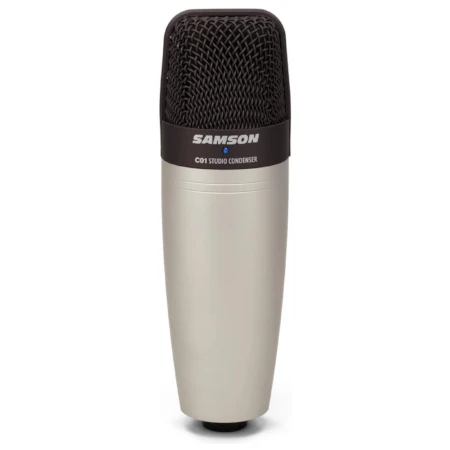
✅ Check Price on Amazon
As an Amazon Associate I earn from qualifying purchases.
The Samson C01 is a reliable and affordable condenser microphone that delivers clear and detailed sound. It features a large diaphragm and a cardioid pickup pattern, which helps to capture the nuances of vocals and instruments while minimizing background noise. The C01 is built to withstand the rigors of regular use, making it a durable choice for home studio recordings. It is an excellent option for podcasters, musicians, and voiceover artists on a budget.
Condenser microphones are essential for achieving high-quality recordings in a home studio. The Audio-Technica AT2020, MXL 990, and Samson C01 are top choices that offer excellent performance and durability at budget-friendly prices. Whether you are recording vocals, acoustic instruments, or podcasts, these microphones will help you capture detailed and accurate sound. For more tips on improving your home studio setup, check out our article on audio quality tips for home studios.
4. Convenient USB Microphones for Home Studios
USB microphones offer a plug-and-play solution, making them incredibly convenient for home studio setups, especially for beginners. These microphones have built-in audio interfaces, allowing them to connect directly to a computer via a USB port. This eliminates the need for additional equipment like audio interfaces or mixers. Here are some top budget-friendly USB microphones that deliver excellent sound quality and ease of use.
Blue Yeti
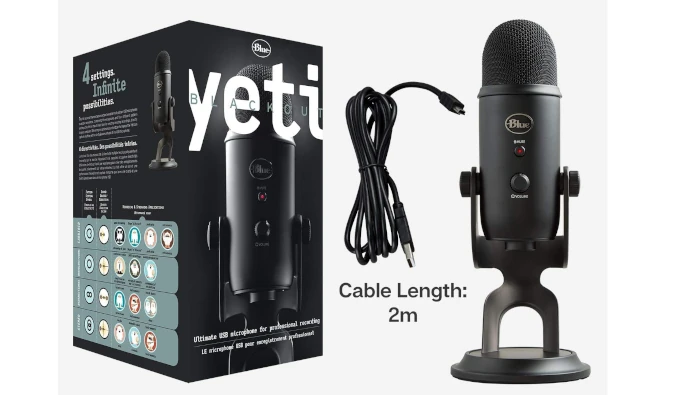
✅ Check Price on Amazon
As an Amazon Associate I earn from qualifying purchases.
The Blue Yeti is one of the most popular USB microphones on the market, known for its versatility and high-quality sound. It features multiple polar patterns, including cardioid, bidirectional, omnidirectional, and stereo, making it suitable for various recording scenarios. The Blue Yeti is perfect for podcasting, streaming, and recording music. Its built-in gain control, mute button, and zero-latency headphone output provide added convenience for users. For a detailed guide on choosing and using USB microphones, check out our article on USB microphones for home studios.
Fifine K669B
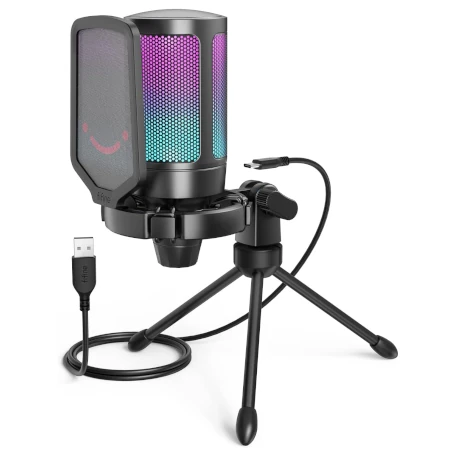
✅ Check Price on Amazon
As an Amazon Associate I earn from qualifying purchases.
The Fifine K669B is a compact and budget-friendly USB microphone that delivers impressive sound quality. It features a cardioid polar pattern, which helps to isolate the sound source and minimize background noise. The K669B is ideal for beginners who need a reliable microphone for podcasting, voiceovers, and home studio recordings. Its metal construction and sturdy tripod stand ensure durability and stability during use.
Rode NT-USB Mini
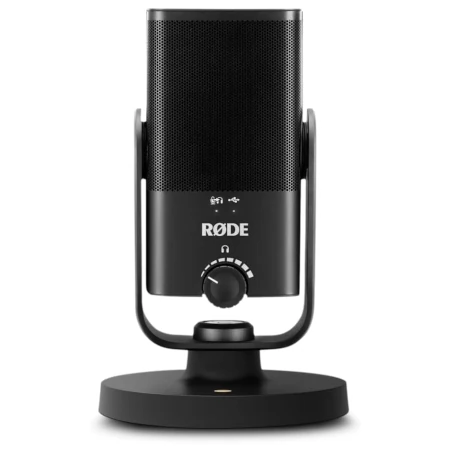
✅ Check Price on Amazon
As an Amazon Associate I earn from qualifying purchases.
The Rode NT-USB Mini is a compact and professional-sounding USB microphone that is perfect for recording vocals and instruments. It features a directional cardioid pickup pattern that focuses on the sound source while reducing background noise. The NT-USB Mini includes a built-in pop filter to minimize plosive sounds and a detachable magnetic desk stand for easy positioning. Its zero-latency monitoring feature allows for real-time audio playback, making it an excellent choice for musicians and podcasters.
USB microphones are a convenient and affordable option for home studios, offering easy setup and high-quality sound. The Blue Yeti, Fifine K669B, and Rode NT-USB Mini are top choices that provide excellent performance for various recording needs. Whether you are podcasting, streaming, or recording music, these USB microphones will help you achieve professional-quality results without the need for additional equipment. For more tips on improving your home studio setup, explore our guide on producing a song from home.
5. Tips for Choosing the Right Microphone
Selecting the right microphone for your home studio involves careful consideration of several factors. Understanding your specific recording needs and preferences will help you make an informed decision. Here are some essential tips to guide you in choosing the perfect microphone:
Define Your Purpose
First and foremost, identify the primary use of the microphone. Are you recording vocals, instruments, podcasts, or a combination of these? Different microphones excel in different scenarios:
- Vocals: Condenser microphones are generally preferred for their sensitivity and ability to capture detailed sound.
- Instruments: Dynamic microphones are great for handling high sound pressure levels, making them ideal for loud instruments like drums and electric guitars.
- Podcasts and Streaming: USB microphones offer convenience and ease of use, making them perfect for digital recordings.
Set a Budget
Determine your budget before shopping for a microphone. While it’s tempting to go for the cheapest option, investing a bit more can significantly improve your recording quality. However, there are excellent budget-friendly microphones available that offer great performance. Sticking to your budget while considering long-term value is key.
Consider Compatibility
Ensure the microphone you choose is compatible with your recording equipment. For instance, if you have an audio interface, an XLR microphone would be suitable. However, if you prefer a straightforward setup, a USB microphone might be a better option as it connects directly to your computer. Additionally, check if the microphone requires phantom power and whether your interface can provide it.
Evaluate the Polar Pattern
The polar pattern of a microphone determines how it picks up sound from different directions. Common polar patterns include:
- Cardioid: Captures sound from the front and rejects noise from the sides and rear. Ideal for solo vocals and instruments.
- Omnidirectional: Picks up sound equally from all directions. Suitable for capturing room ambiance or group recordings.
- Bidirectional (Figure-8): Captures sound from the front and rear while rejecting noise from the sides. Great for duets or interviews.
Test and Compare
Whenever possible, test different microphones before making a purchase. This allows you to compare their sound quality and determine which one best suits your voice or instrument. Many music stores have demo units available for testing. Additionally, reading reviews and watching comparison videos can provide valuable insights.
Choosing the right microphone for your home studio involves defining your purpose, setting a budget, ensuring compatibility, evaluating the polar pattern, and testing various options. By considering these factors, you can find a microphone that meets your recording needs and delivers high-quality sound. For more tips on improving your home studio, check out our article on avoiding common home studio mistakes.
6. Enhancing Your Home Studio Setup
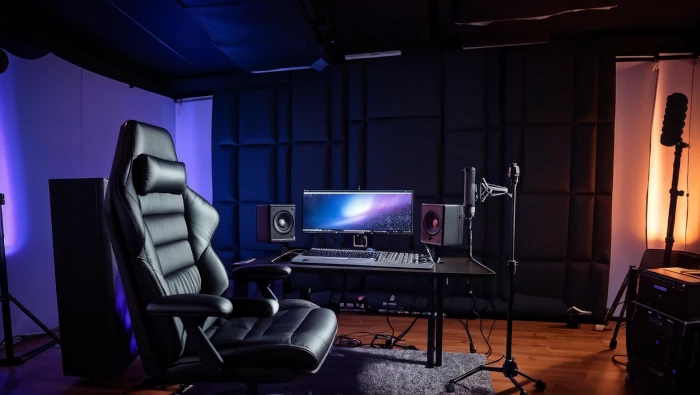
Creating a professional-sounding home studio involves more than just choosing the right microphone. Several other factors contribute to the overall sound quality and efficiency of your recording space. Here are some tips to enhance your home studio setup:
Acoustic Treatment
Proper acoustic treatment is crucial for achieving clear and accurate recordings. Untreated rooms can produce unwanted echoes, reverb, and noise that can affect your recordings. Here are some acoustic treatment tips:
- Foam Panels: Install foam panels on the walls to absorb mid and high frequencies.
- Bass Traps: Place bass traps in the corners to control low-frequency buildup.
- Diffusers: Use diffusers to scatter sound waves evenly, reducing echoes and improving room acoustics.
Invest in a Quality Audio Interface
An audio interface is essential for converting analog signals from your microphone into digital signals for your computer. A good audio interface will provide high-quality preamps, low latency, and multiple input/output options. Consider interfaces from reputable brands like Focusrite, PreSonus, and Universal Audio. For more details, read our guide on audio interfaces.
Use Pop Filters and Shock Mounts
Pop filters and shock mounts are inexpensive accessories that can significantly enhance your recording quality:
- Pop Filters: Place a pop filter in front of your microphone to reduce plosive sounds (like “p” and “b” sounds) that can cause distortion.
- Shock Mounts: Use a shock mount to isolate your microphone from vibrations and handling noise, ensuring cleaner recordings.
Optimize Microphone Placement
Microphone placement plays a critical role in capturing the best sound:
- Vocals: Position the microphone about 6-12 inches away from the singer, with a slight angle to reduce sibilance.
- Instruments: Experiment with different placements to find the sweet spot that captures the instrument’s natural sound.
Use Studio Monitors and Headphones
Accurate monitoring is essential for mixing and mastering your recordings. Invest in a good pair of studio monitors and headphones:
- Studio Monitors: Place them at ear level and form an equilateral triangle with your listening position for the best soundstage.
- Headphones: Use closed-back headphones for recording to prevent sound bleed and open-back headphones for mixing for a more natural sound.
Keep Your Setup Organized
A tidy and organized studio can improve workflow and creativity. Use cable management solutions to keep cables out of the way and label your equipment and connections. This helps prevent accidents and makes troubleshooting easier.
Enhancing your home studio setup involves investing in acoustic treatment, a quality audio interface, and essential accessories like pop filters and shock mounts. Proper microphone placement and accurate monitoring with studio monitors and headphones are also crucial. Finally, keeping your setup organized can improve efficiency and creativity. For more tips on enhancing your home studio, check out our article on building an efficient home studio.
Conclusion
Setting up a budget-friendly home studio doesn’t have to be daunting. By understanding the different types of microphones, such as dynamic, condenser, and USB, you can make informed decisions based on your specific recording needs. Each type offers unique advantages that cater to various recording scenarios, from vocals and instruments to podcasting and streaming.
Exploring top budget-friendly dynamic microphones like the Shure SM57, Behringer XM8500, and Audio-Technica ATR2100x-USB ensures you get robust and versatile options for live and studio settings. Condenser microphones like the Audio-Technica AT2020, MXL 990, and Samson C01 provide detailed and accurate sound capture, perfect for vocals and acoustic instruments. Meanwhile, USB microphones such as the Blue Yeti, Fifine K669B, and Rode NT-USB Mini offer convenient plug-and-play solutions for digital recordings.
Choosing the right microphone involves defining your purpose, setting a budget, ensuring compatibility with your equipment, evaluating the polar pattern, and testing different options. Additionally, enhancing your home studio setup with proper acoustic treatment, a quality audio interface, essential accessories, and accurate monitoring can significantly improve your recording quality and workflow.
By following these guidelines and making thoughtful investments, you can create a home studio that delivers professional-quality recordings without breaking the bank. For more tips and detailed guides on building and optimizing your home studio, explore our resources on Home Studio Start. Happy recording!
